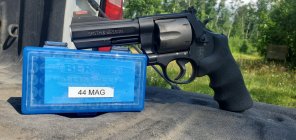How do I get enough grip on the bullet without damaging the coating?
You have heard some good pointers above, so I won't rehash all of that beyond the obvious which is to say the methods are the same ones, but the outcomes may be different...
To know one way or the other, (without firing tests), one has to know what level they like in the first place.
Say for example you like a regular uncoated jacketed bullet with a particular neck tension and crimp. If you have something along the lines of a K&M arbor press with a force pack, or a hydro-press, then you measure the force to move that bullet and use that as a guide.
The friction coefficient of your coating may or may not be similar to the jacketed examples, but the overall composite grip level of the stuff you like can be indirectly tested this way so you get at least some measure of what you are after. I found that jacketed Sierra bullets worked well at one level, and cast Keith bullets that were coated with moly infused powder coatings liked a different level.
Knowing that it isn't the same as the pull force but that it is far more convenient than tooling up to measure the pull force, the seating force can make a good measure for comparing friction coefficients, neck tensions, and crimps. It is an indirect method, but it is a decent way to measure the effects of those parameters.
I was able to get some great results doing things this way with a 44 mag using a taper crimp and Dillon carbide sizing die. As always, YMMV












